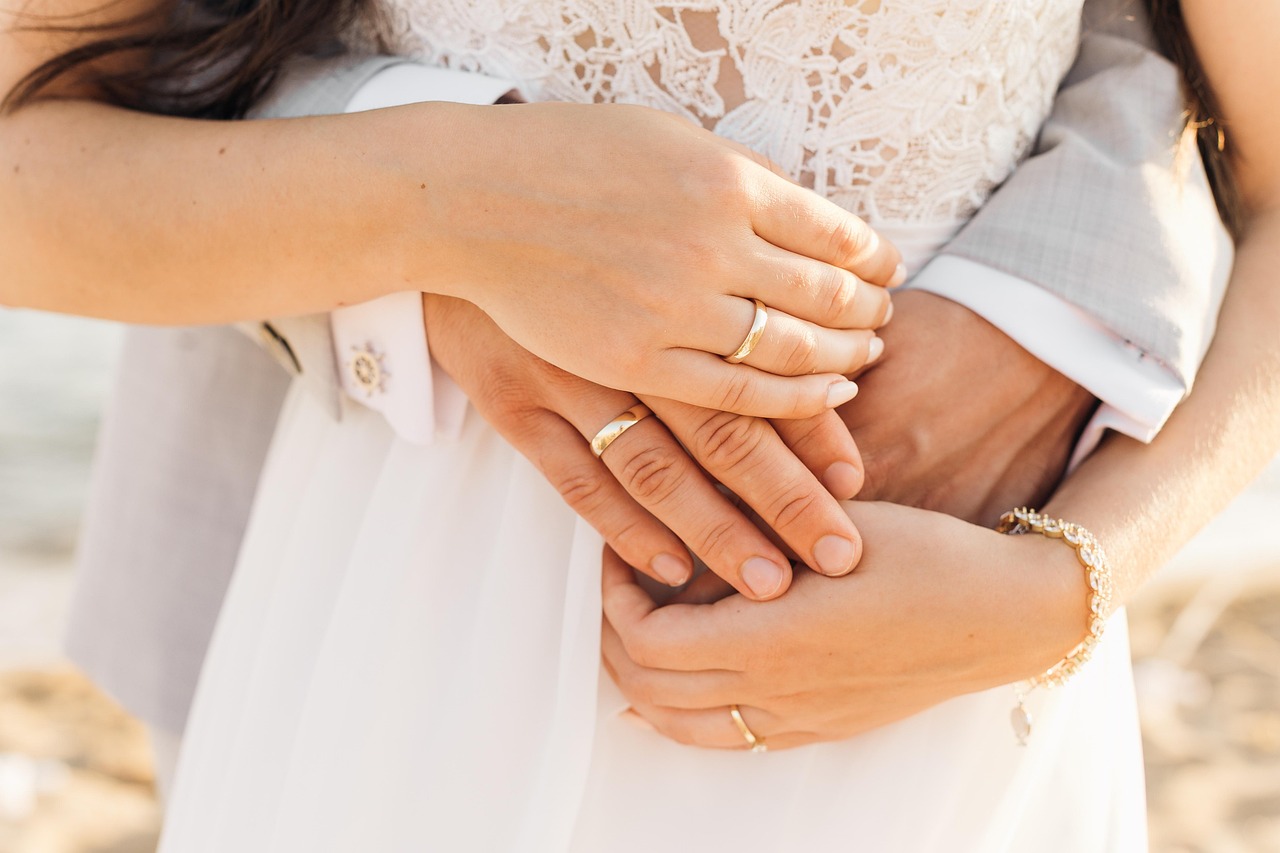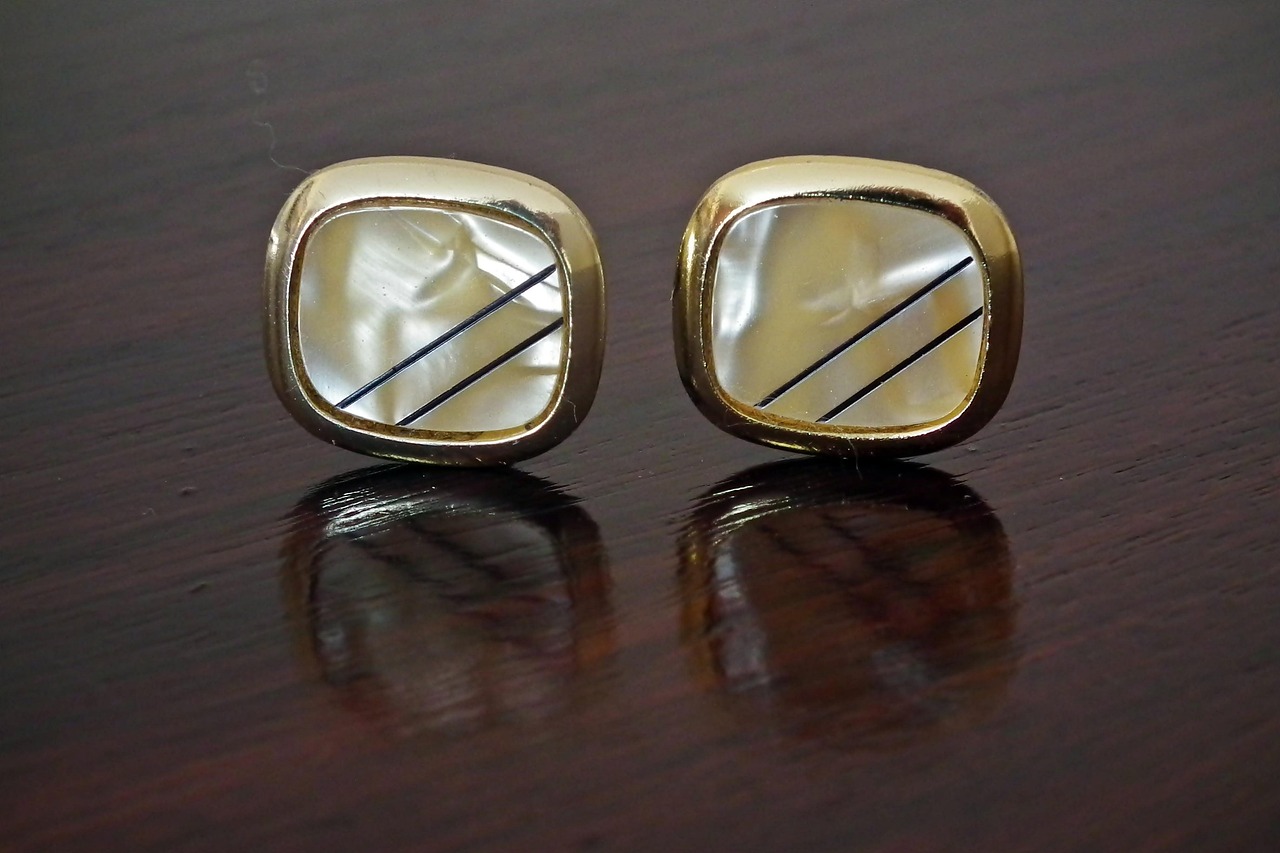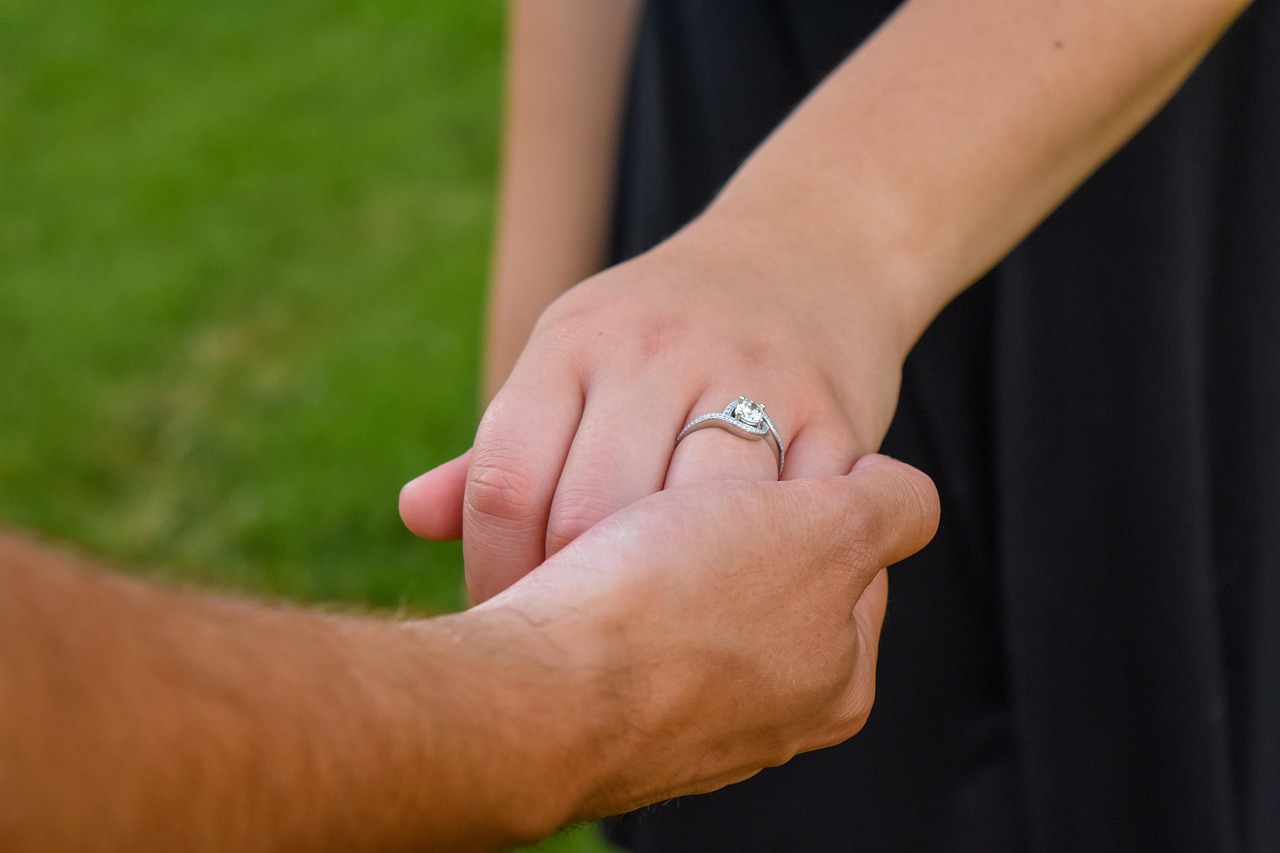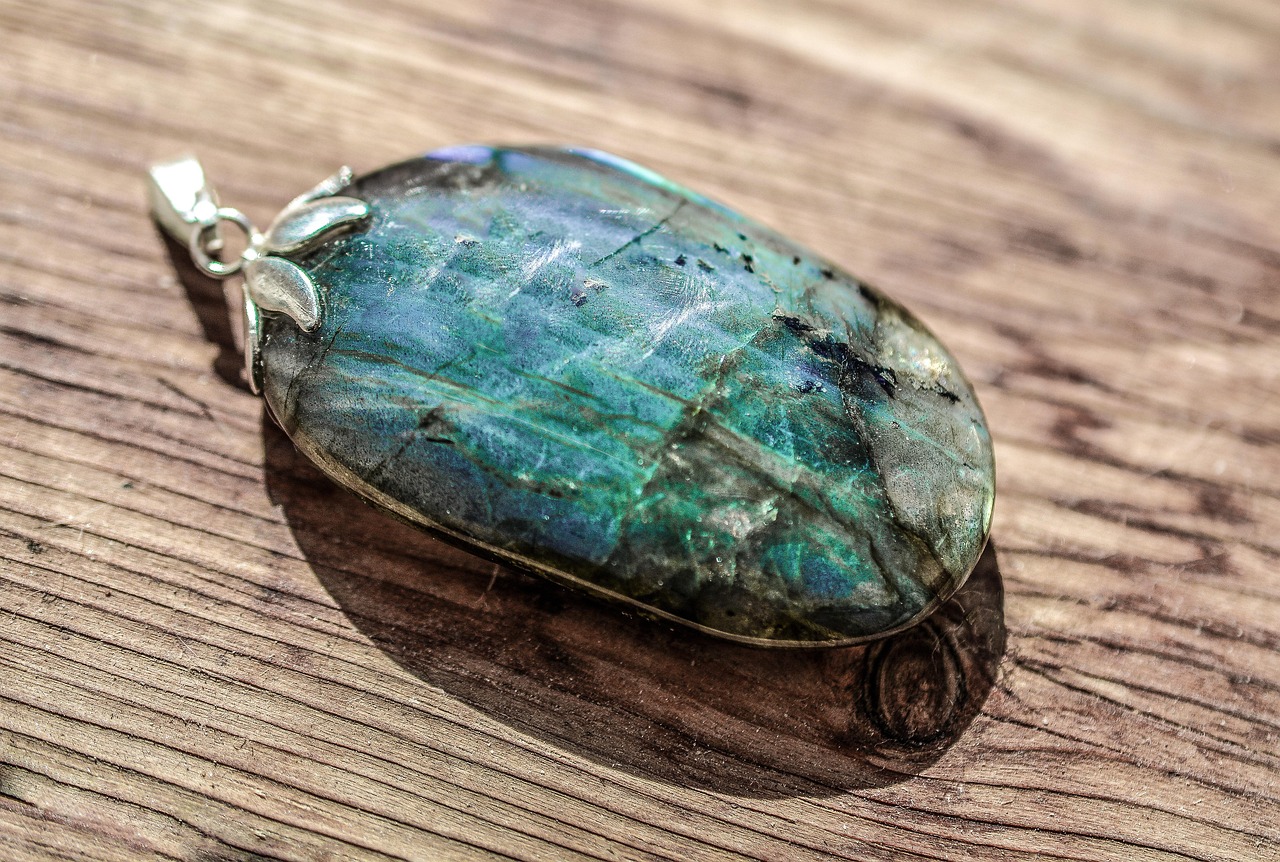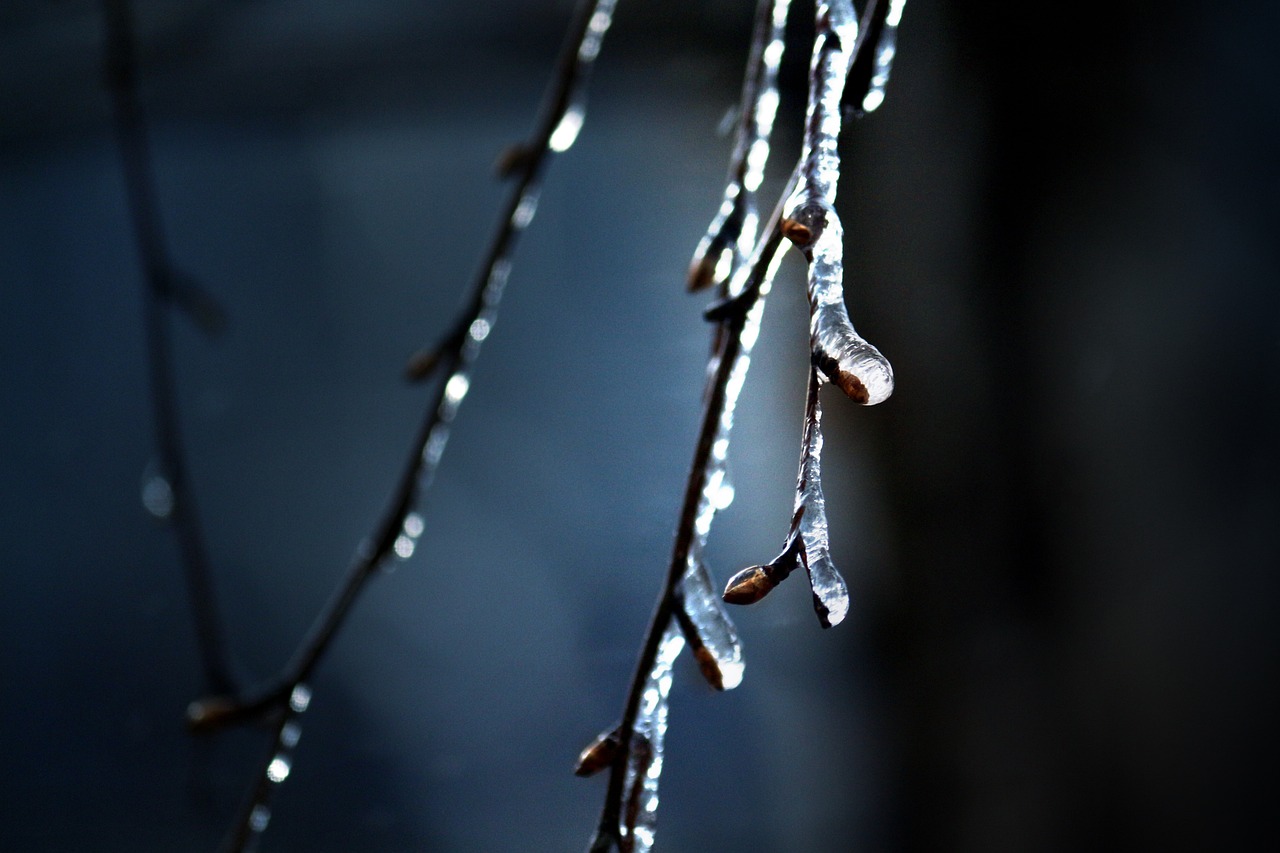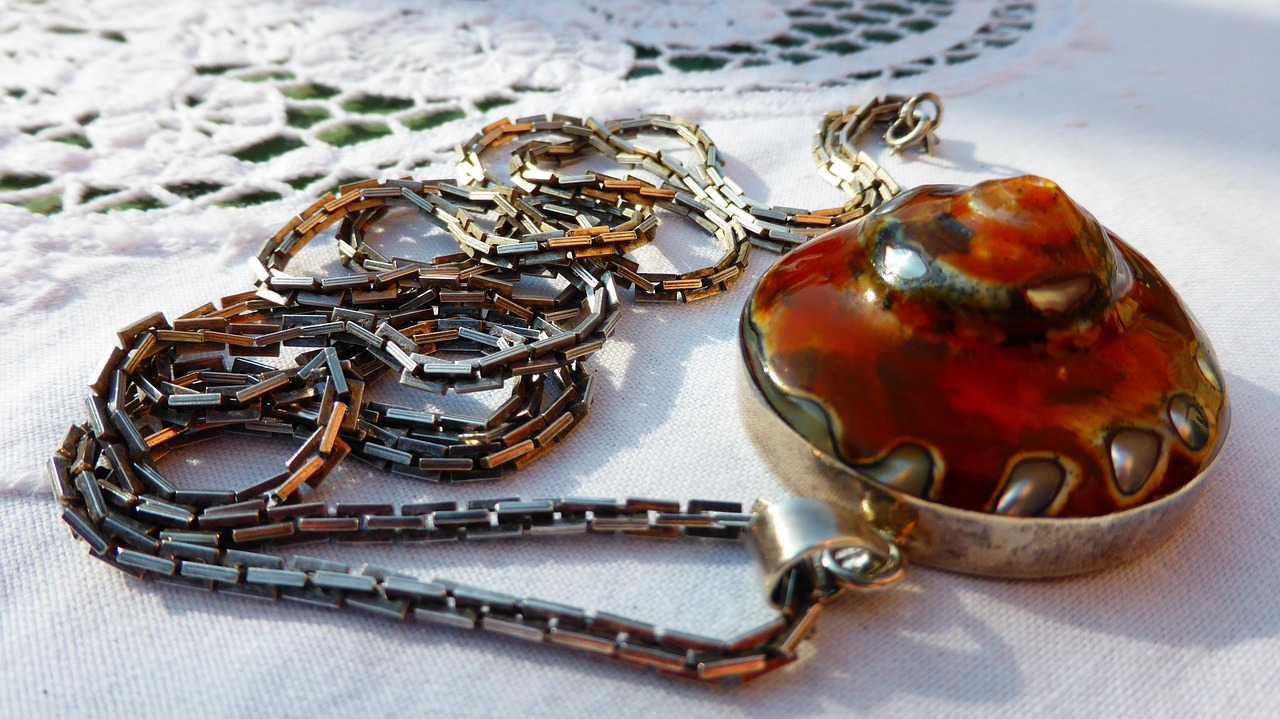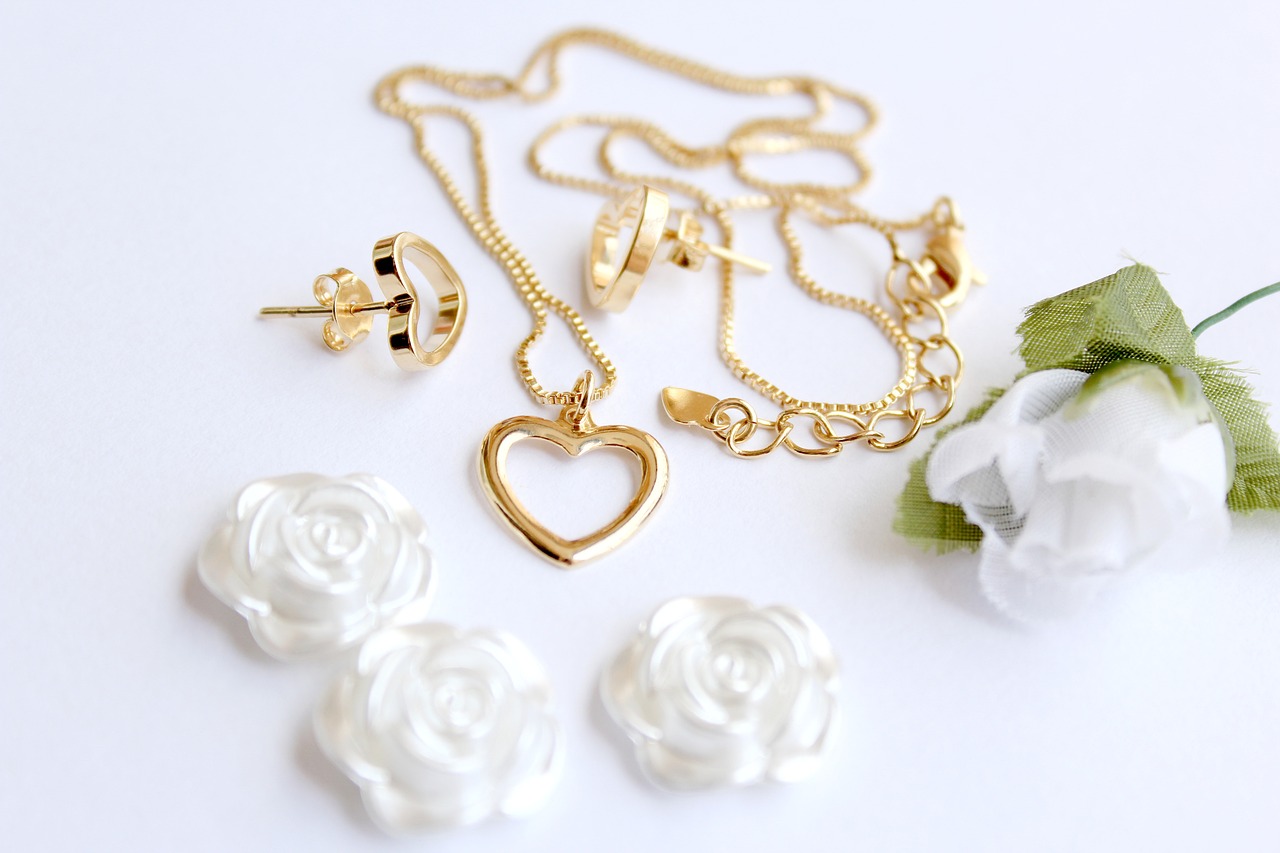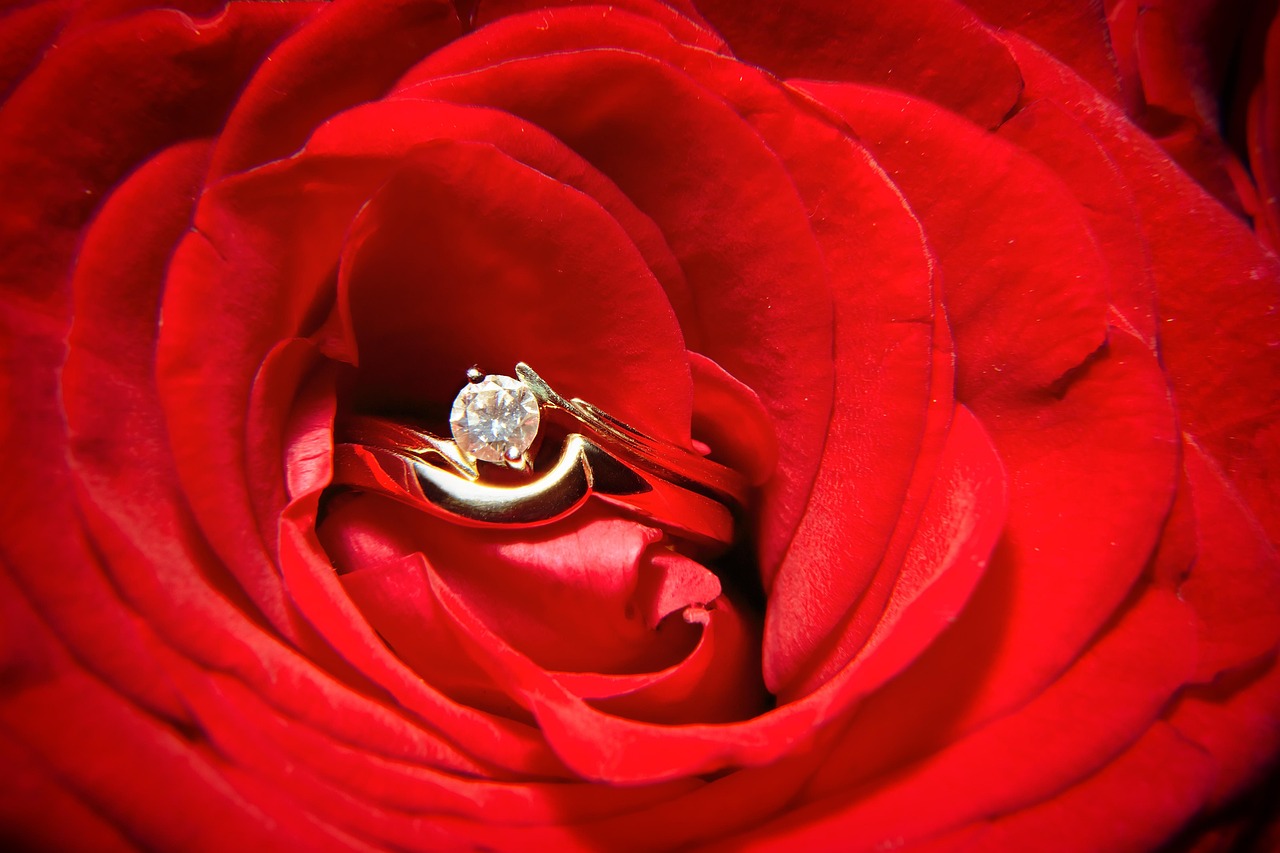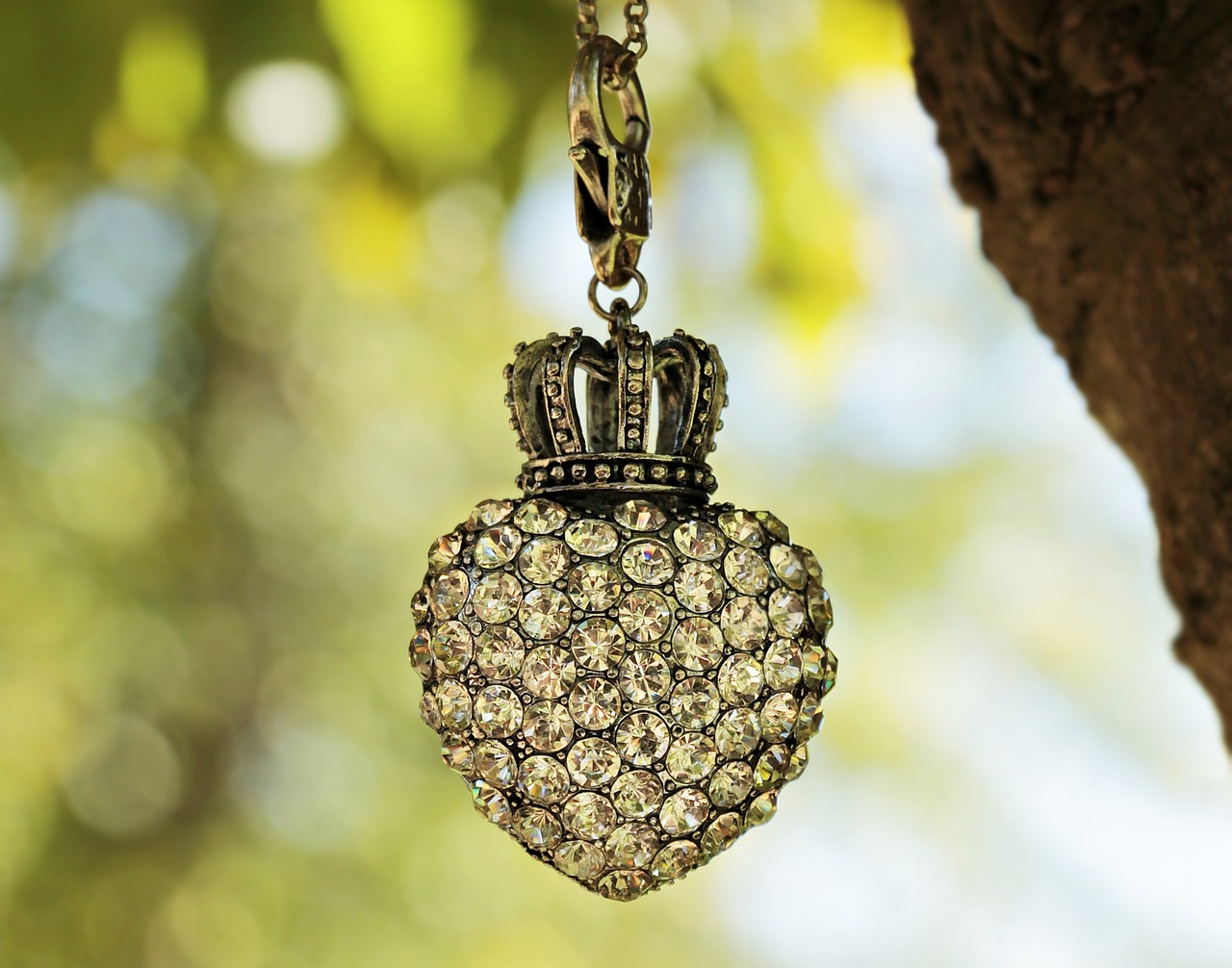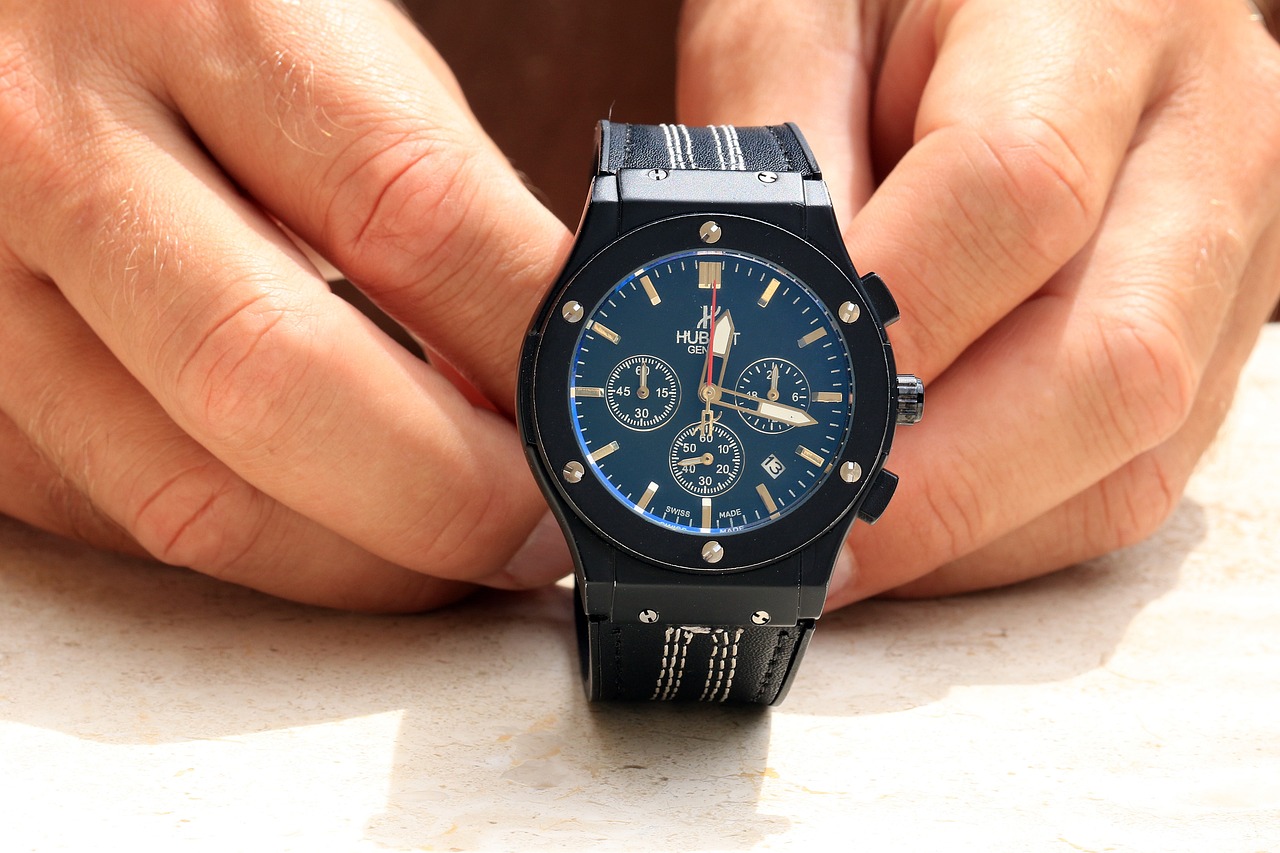This article delves into the intriguing world of jewelry, specifically focusing on the distinctions between antique and modern jewelry. By examining various aspects such as value, craftsmanship, and current market trends, we aim to equip collectors and enthusiasts with the knowledge needed to make informed investment decisions.
Antique jewelry is generally classified as pieces that are over 100 years old. This classification is crucial for collectors as it helps in identifying authentic antique items. These pieces often carry a rich history, reflecting the era in which they were made. Collectors value them not only for their beauty but also for their historical significance.
Modern jewelry, on the other hand, includes designs created within the last century. It often features contemporary materials and innovative techniques. This section explores the characteristics that differentiate modern pieces from their antique counterparts, including design aesthetics and craftsmanship.
The value of antique jewelry is influenced by several factors, including age, rarity, condition, and provenance. Understanding these elements is essential for collectors as it aids in assessing potential purchases. For example, a piece with a well-documented history may command a higher price due to its provenance.
In contrast, the value of modern jewelry is shaped by factors such as brand reputation, design trends, and market demand. This section will delve into how these aspects impact the worth of contemporary pieces, highlighting the importance of brand recognition in the modern jewelry market.
The appreciation of jewelry value can vary significantly between antique and modern pieces. Historical data suggests that while some modern pieces can appreciate, antique jewelry often has a more consistent track record of value increase. This section analyzes market trends to determine which type is a better investment.
Identifying quality in antique jewelry involves a keen eye for craftsmanship, materials, and design. Collectors should look for signs of wear that are consistent with the piece’s age and examine the overall condition. Practical tips for ensuring authenticity and value are provided in this section.
When purchasing modern jewelry, buyers should consider design innovation, brand prestige, and material quality. This section offers insights into making informed choices, emphasizing the importance of understanding current trends and personal taste.
Investing in antique jewelry does come with risks, including the potential for forgery and fluctuating market values. This section outlines common pitfalls and offers strategies to mitigate these risks, ensuring collectors make sound investments.
Modern jewelry collecting is heavily influenced by trends in fashion and technology. This section discusses the current trends shaping the modern jewelry landscape, including the rise of sustainable materials and the impact of social media on consumer choices.
Proper care is essential for both antique and modern jewelry to maintain their value. This section provides guidelines on cleaning, storage, and maintenance to preserve these treasured items, ensuring they remain in excellent condition for years to come.

What Defines Antique Jewelry?
Antique jewelry is a fascinating realm that captures the essence of history and craftsmanship. Typically defined as pieces that are over 100 years old, antique jewelry offers a glimpse into the past, showcasing the artistry and cultural significance of bygone eras. Understanding this classification is crucial for collectors, as it helps them identify genuine antique items and appreciate their historical significance.
When we refer to antique jewelry, we are not just talking about age; we are also considering the craftsmanship and the stories behind each piece. Unlike modern jewelry, which often emphasizes contemporary design and materials, antique pieces reflect the techniques and styles of their time. This includes everything from the intricate handwork involved in creating a Victorian brooch to the delicate filigree work seen in Edwardian pieces.
Moreover, the historical context of antique jewelry adds to its allure. Each piece carries with it a narrative that can connect us to different periods, cultures, and even notable figures. For instance, jewelry from the Art Deco era is characterized by its geometric shapes and vibrant colors, representing the cultural shifts of the 1920s and 1930s. Understanding these contexts not only enhances appreciation but also informs collectors about the potential value of their acquisitions.
In addition to age and craftsmanship, factors such as rarity and provenance play significant roles in defining antique jewelry. A piece that was once owned by a famous individual or that features rare materials can command a much higher price in the market. Collectors often seek out these unique stories, as they add layers of meaning and value to the jewelry.
Identifying antique jewelry requires a keen eye and a good understanding of the styles and materials used in different eras. For example, pieces made before the 1900s often feature natural gemstones and handcrafted settings, while those from the mid-20th century may incorporate synthetic materials and mass production techniques. This knowledge is invaluable for collectors who wish to ensure they are purchasing authentic items rather than modern reproductions.
Furthermore, the condition of antique jewelry is paramount. Pieces that have been well-preserved or restored by professionals tend to hold their value better than those that show significant wear. Collectors should always examine items closely, looking for signs of damage or repair that could affect their worth.
In summary, antique jewelry is more than just old adornments; it is a reflection of history, artistry, and culture. By understanding what defines antique jewelry, collectors can make informed decisions, appreciate the unique qualities of these pieces, and ultimately enrich their collections. Whether you are a seasoned collector or a newcomer to the world of antique jewelry, recognizing the significance of these items can enhance your experience and investment.
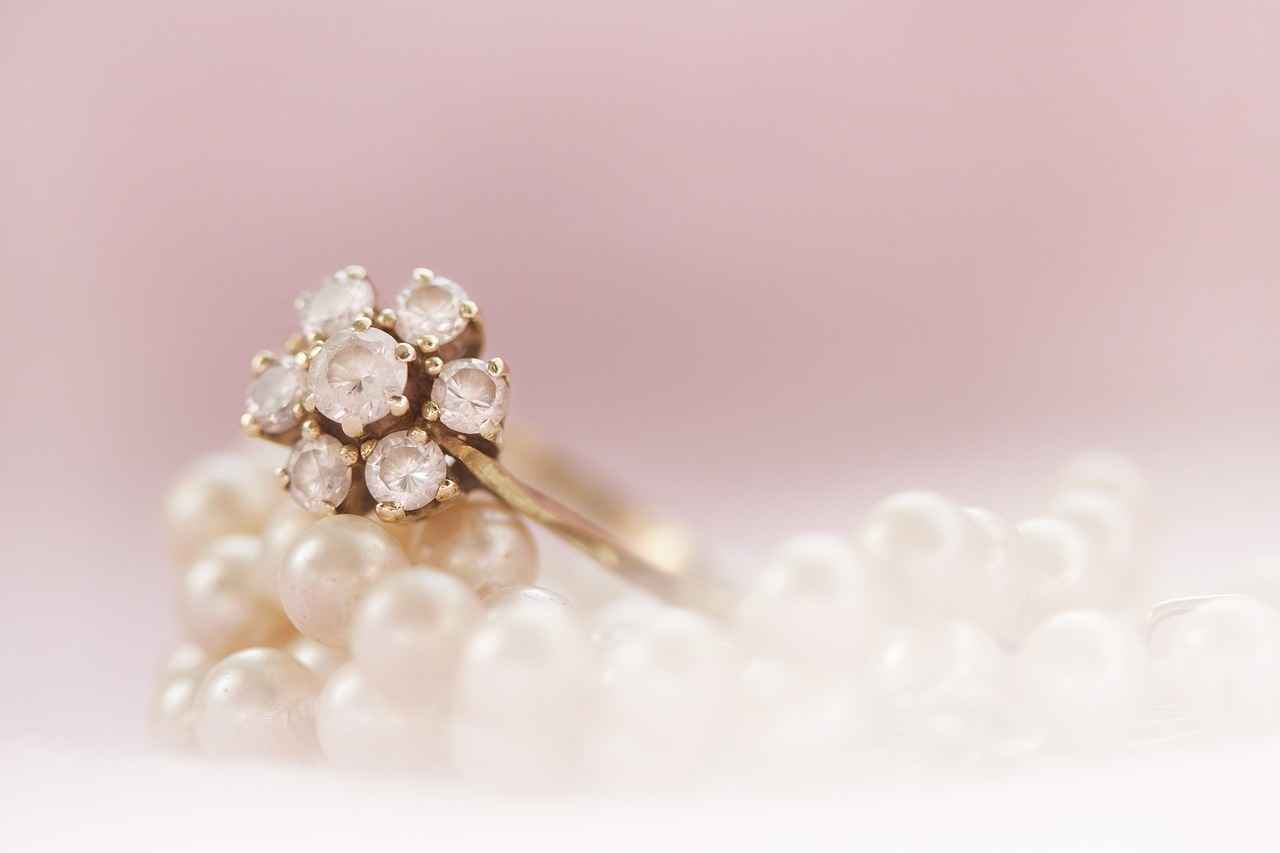
What Makes Modern Jewelry Unique?
Modern jewelry is a captivating realm that showcases a wide array of designs and styles developed over the last century. Unlike their antique counterparts, modern pieces often incorporate innovative materials and contemporary techniques, setting them apart in both aesthetics and functionality. This section aims to explore the unique characteristics that define modern jewelry, highlighting its evolution and significance in today’s fashion landscape.
One of the most notable features of modern jewelry is its diverse material palette. While traditional jewelry often relied on precious metals and gemstones, contemporary designs frequently utilize alternative materials such as resin, acrylic, and even recycled elements. This shift not only allows for greater creativity but also promotes sustainability, appealing to environmentally conscious consumers.
- Innovative Techniques: Modern jewelers employ advanced techniques like 3D printing, laser cutting, and computer-aided design (CAD). These technologies enable intricate designs that were previously impossible, pushing the boundaries of traditional craftsmanship.
- Personalization: A significant trend in modern jewelry is the emphasis on personalization. Consumers are increasingly seeking unique pieces that reflect their individual styles and stories. Customization options, such as engraving and bespoke designs, are now more accessible than ever.
- Bold Aesthetics: Modern jewelry often embraces bold and unconventional aesthetics. From oversized statement pieces to minimalist designs, contemporary styles cater to various tastes, allowing wearers to express their personalities through their jewelry choices.
Moreover, modern jewelry is often characterized by its fusion of art and fashion. Many contemporary designers draw inspiration from various artistic movements, incorporating elements of sculpture, architecture, and even technology into their creations. This artistic approach not only enhances the visual appeal but also elevates jewelry to a form of wearable art.
Another defining aspect of modern jewelry is its cultural inclusivity. As globalization continues to shape the fashion industry, modern jewelry reflects a rich tapestry of cultural influences. Designers from diverse backgrounds bring unique perspectives and techniques, resulting in pieces that celebrate global heritage while appealing to a wide audience.
In terms of market trends, modern jewelry is experiencing a surge in popularity. With the rise of social media and online platforms, consumers are more connected than ever, allowing for rapid dissemination of trends and styles. This connectivity has also fostered a sense of community among collectors and enthusiasts, who share their passion for modern pieces through various online forums and social media channels.
As we delve deeper into the realm of modern jewelry, it becomes evident that its uniqueness lies not only in the materials and techniques used but also in the stories and emotions they convey. Each piece serves as a reflection of the wearer’s identity, making modern jewelry a powerful medium of self-expression.
In conclusion, the evolution of modern jewelry represents a significant departure from traditional designs. Its innovative materials, advanced techniques, and cultural inclusivity create a rich landscape that appeals to contemporary consumers. As modern jewelry continues to evolve, it will undoubtedly remain a vital aspect of personal style and artistic expression.
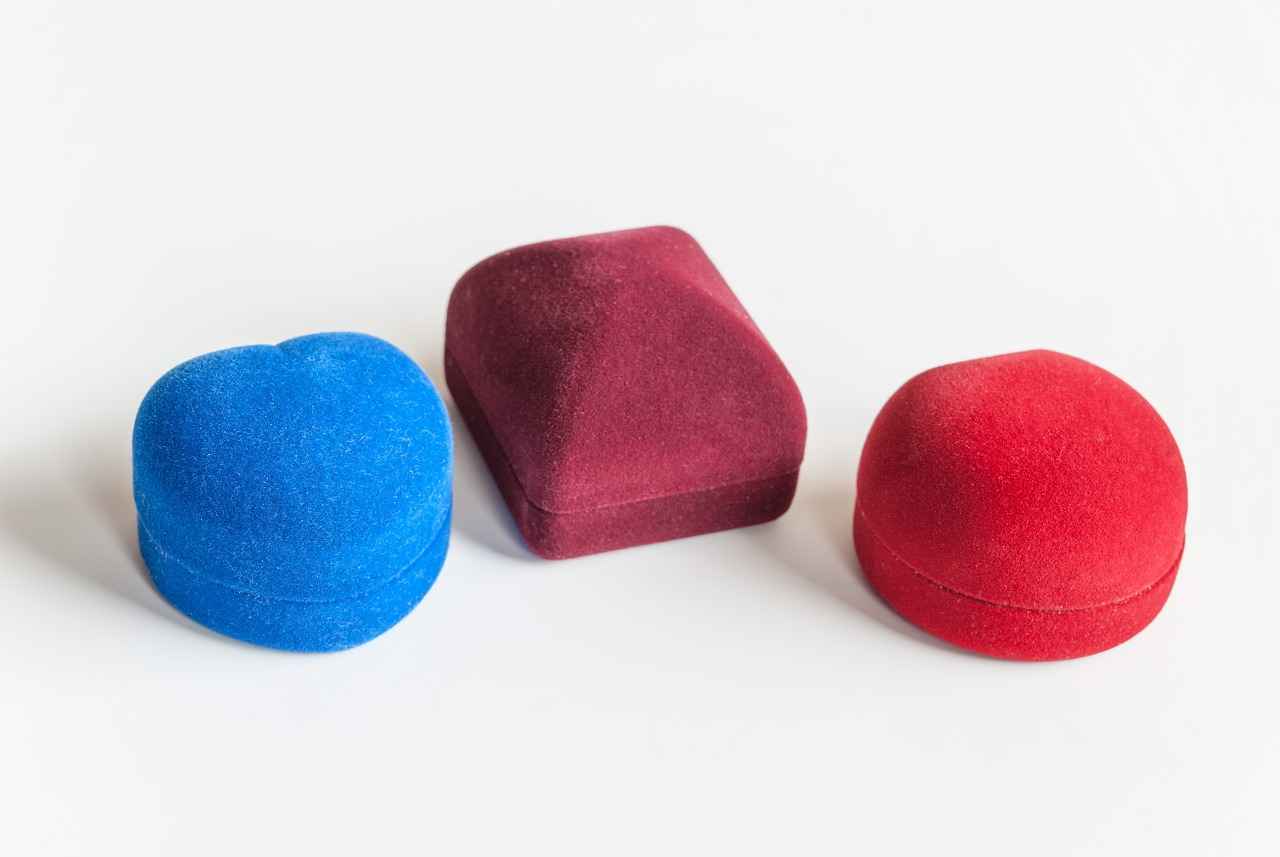
How is Value Determined for Antique Jewelry?
When it comes to understanding antique jewelry, one of the most critical aspects is determining its value. The value of antique jewelry is influenced by several key factors, including age, rarity, condition, and provenance. Each of these elements plays a significant role in how collectors and investors assess potential purchases.
The age of a piece is often the first criterion considered when determining its worth. Generally, jewelry that is over 100 years old qualifies as antique. However, the specific era from which the piece originates can also affect its desirability. For example, Victorian or Art Deco pieces may command higher prices due to their historical significance and craftsmanship.
Rarity is another crucial factor in assessing the value of antique jewelry. Pieces that were produced in limited quantities or are unique in their design tend to be more valuable. Collectors often seek out items that are not only beautiful but also hard to find. For instance, a one-of-a-kind piece created by a renowned jeweler may fetch a premium price compared to more commonly found items.
The overall condition of an antique piece significantly impacts its market value. Jewelry that has been well-preserved, with minimal signs of wear, is generally more sought after. Factors such as repair history, missing stones, or damaged settings can detract from a piece’s value. Collectors are encouraged to seek pieces that not only appeal to them aesthetically but also possess a solid structural integrity.
Provenance refers to the documented history of an item, including its previous ownership and origin. A well-documented provenance can enhance the value of antique jewelry, as it adds a layer of authenticity and historical significance. For instance, a piece that once belonged to a famous figure or has a rich backstory can attract collectors willing to pay a premium.
To accurately assess the value of antique jewelry, collectors should consider consulting with experts and appraisers. Professional appraisals can provide insights based on current market trends and historical data. Additionally, attending antique shows or auctions can offer firsthand experience in understanding how pieces are valued in real-time.
Numerous resources are available for collectors looking to understand the value of antique jewelry. Books, online databases, and dedicated jewelry appraisal services can provide valuable information. Joining collector groups or forums can also offer insights and advice from experienced enthusiasts.
In summary, understanding how the value of antique jewelry is determined involves a multifaceted approach. By considering factors such as age, rarity, condition, and provenance, collectors can make informed decisions when investing in these timeless treasures. Awareness of these elements not only enhances the collecting experience but also aids in preserving the rich history that antique jewelry represents.
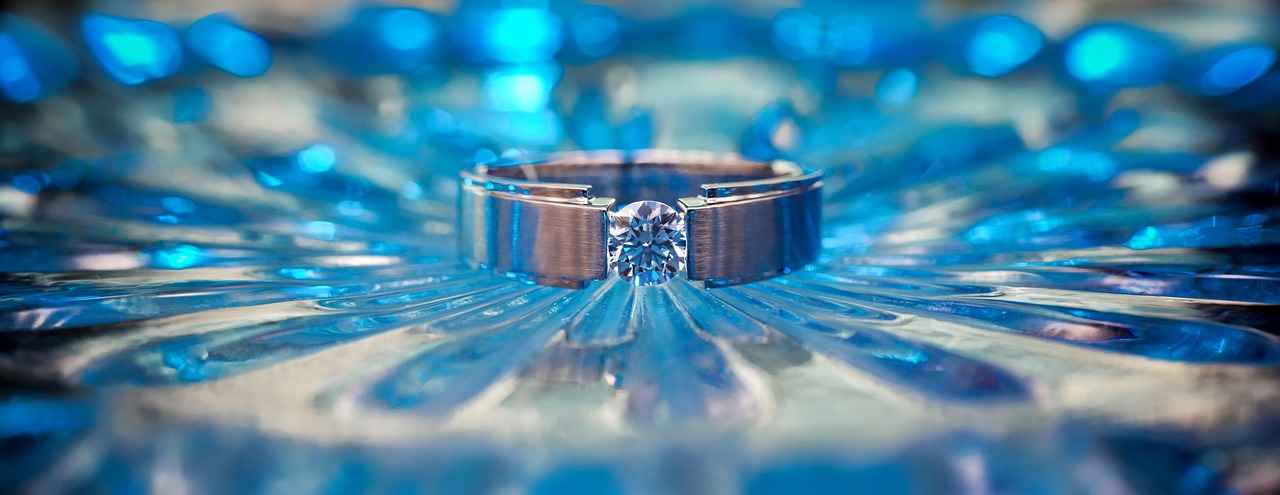
What Factors Influence the Value of Modern Jewelry?
The world of modern jewelry is dynamic and ever-evolving, with its value shaped by a multitude of factors. Understanding these elements is crucial for both collectors and consumers who wish to make informed decisions. This section will delve into the primary aspects that influence the value of contemporary jewelry pieces.
One of the most significant factors affecting the value of modern jewelry is the brand reputation. Renowned brands often carry a prestige that can significantly enhance the worth of their pieces. Consumers are generally willing to pay a premium for jewelry from established designers or luxury brands, as these items are often associated with quality, exclusivity, and status.
The design trends within the jewelry industry also play a crucial role in determining value. Modern jewelry often reflects current fashion trends, which can shift rapidly. For example, minimalist designs may be popular one season, while bold, statement pieces could take precedence the next. Jewelry that aligns with or sets these trends is likely to appreciate in value, while pieces that feel outdated may depreciate.
Market demand is another key factor influencing the value of modern jewelry. The popularity of certain styles, materials, or gemstones can fluctuate based on consumer preferences and economic conditions. For instance, if a particular gemstone becomes trendy, the value of jewelry featuring that stone may rise. Conversely, if a material falls out of favor, pieces made from it may lose value.
The quality of materials and the level of craftsmanship also significantly impact the value of modern jewelry. High-quality materials, such as precious metals and ethically sourced gemstones, can enhance the overall worth of a piece. Additionally, intricate craftsmanship, which showcases the skill and artistry of the jeweler, can contribute to a higher valuation. Buyers are often willing to invest more in pieces that demonstrate exceptional quality and attention to detail.
The provenance or history of a piece can also affect its value. Jewelry with a compelling story or a notable previous owner may command higher prices. Furthermore, authenticity is critical; pieces that come with certificates of authenticity or are verified by reputable appraisers are generally more valuable.
The condition of a piece is paramount when assessing its value. Well-maintained jewelry that shows minimal signs of wear is likely to retain or increase its worth over time. Conversely, pieces that are damaged or poorly cared for can lose significant value. Regular maintenance and proper storage are essential for preserving the integrity of modern jewelry.
Finally, the investment potential of modern jewelry is an important consideration. Some pieces may be seen as investment opportunities, particularly those from renowned designers or limited-edition collections. Buyers should conduct thorough research and consider potential resale values when investing in modern jewelry.
In conclusion, the value of modern jewelry is influenced by a combination of brand reputation, design trends, market demand, materials, craftsmanship, provenance, condition, and investment potential. By understanding these factors, collectors and consumers can make more informed decisions in the vibrant world of contemporary jewelry.
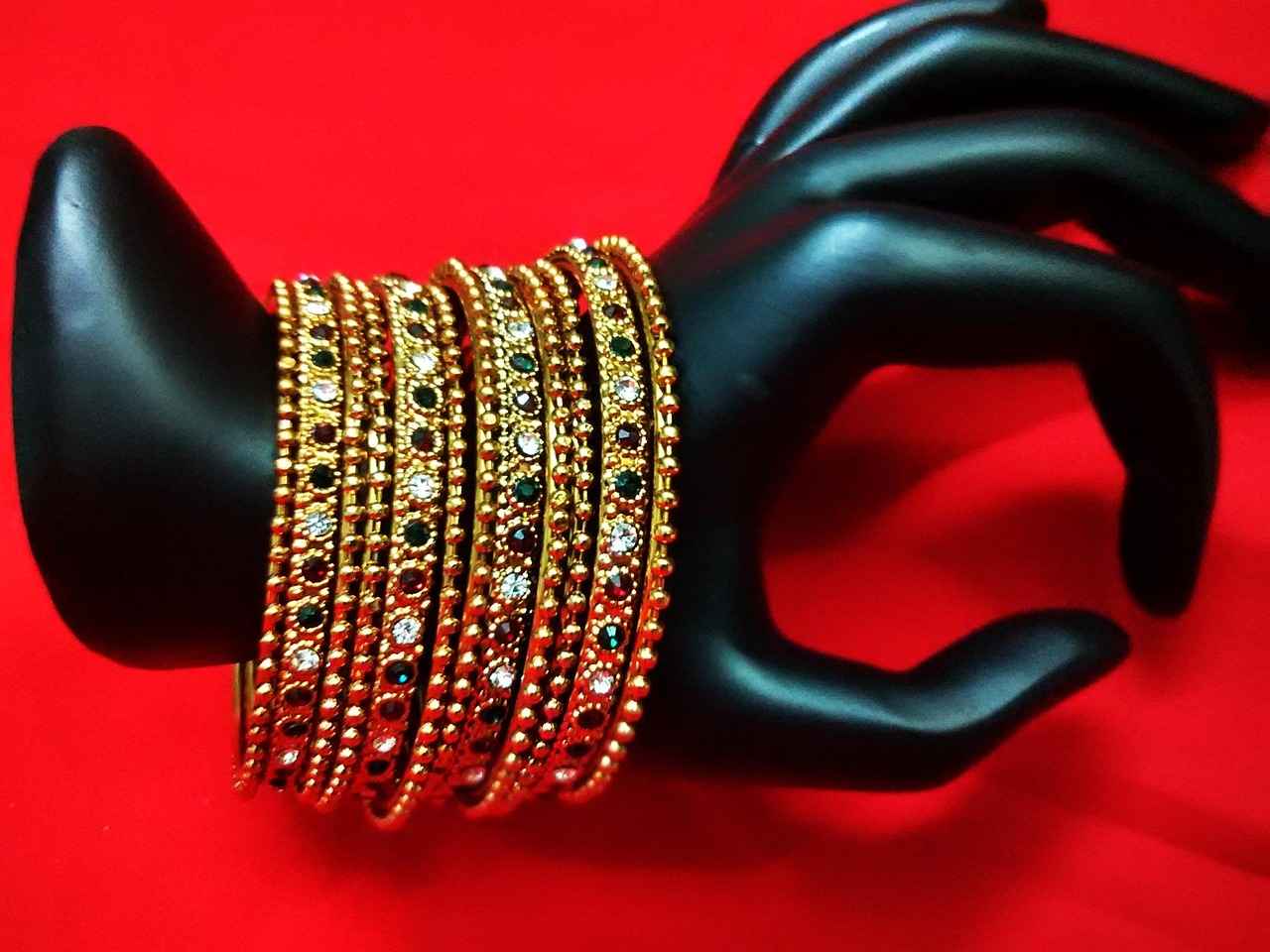
Which Type of Jewelry Appreciates More Over Time?
The world of jewelry investment is both fascinating and complex. In particular, the appreciation of jewelry value can vary significantly between antique and modern pieces. This section analyzes market trends and historical data to determine which type is a better investment. Understanding these differences can empower collectors and investors to make informed decisions.
Antique jewelry, defined as pieces over 100 years old, often holds a unique place in the hearts of collectors. The value of antique jewelry is influenced by several key factors:
- Age: The older the piece, the more historical significance it may carry.
- Rarity: Limited availability can drive prices up, especially for pieces from renowned eras or makers.
- Condition: Well-preserved items are typically valued higher than those showing signs of wear.
- Provenance: A documented history can significantly enhance a piece’s value.
Modern jewelry, created in the last century, often reflects contemporary trends and materials. Factors influencing its value include:
- Brand Reputation: Established brands often command higher prices.
- Design Trends: Pieces that align with current fashion trends may appreciate more quickly.
- Market Demand: Popularity among consumers can quickly elevate a piece’s worth.
When comparing appreciation rates, antique jewelry often shows a robust performance due to its historical significance and rarity. According to historical data, certain antique pieces have appreciated significantly over decades, often outperforming modern jewelry in terms of long-term investment. However, modern jewelry is not without its merits. The rapid evolution of design and materials can lead to spikes in value, particularly for limited-edition pieces or those from high-end designers.
Market trends indicate that while antique jewelry tends to appreciate steadily, modern jewelry can experience volatile fluctuations based on fashion trends and consumer preferences. For example, a modern piece that becomes a fashion statement can see a rapid increase in value, while others may depreciate if they fall out of favor.
Investors must weigh their options carefully. Antique jewelry often serves as a more stable investment due to its timeless appeal and historical context. In contrast, modern jewelry can offer quick returns but comes with higher risks associated with changing trends. Therefore, a balanced approach, incorporating both antique and modern pieces, may provide a diversified investment portfolio.
In summary, both antique and modern jewelry have their unique advantages and potential for appreciation. While antique pieces often hold their value over time due to rarity and historical significance, modern jewelry can provide lucrative opportunities through brand prestige and current trends. By understanding these dynamics, collectors and investors can make informed decisions that align with their goals.
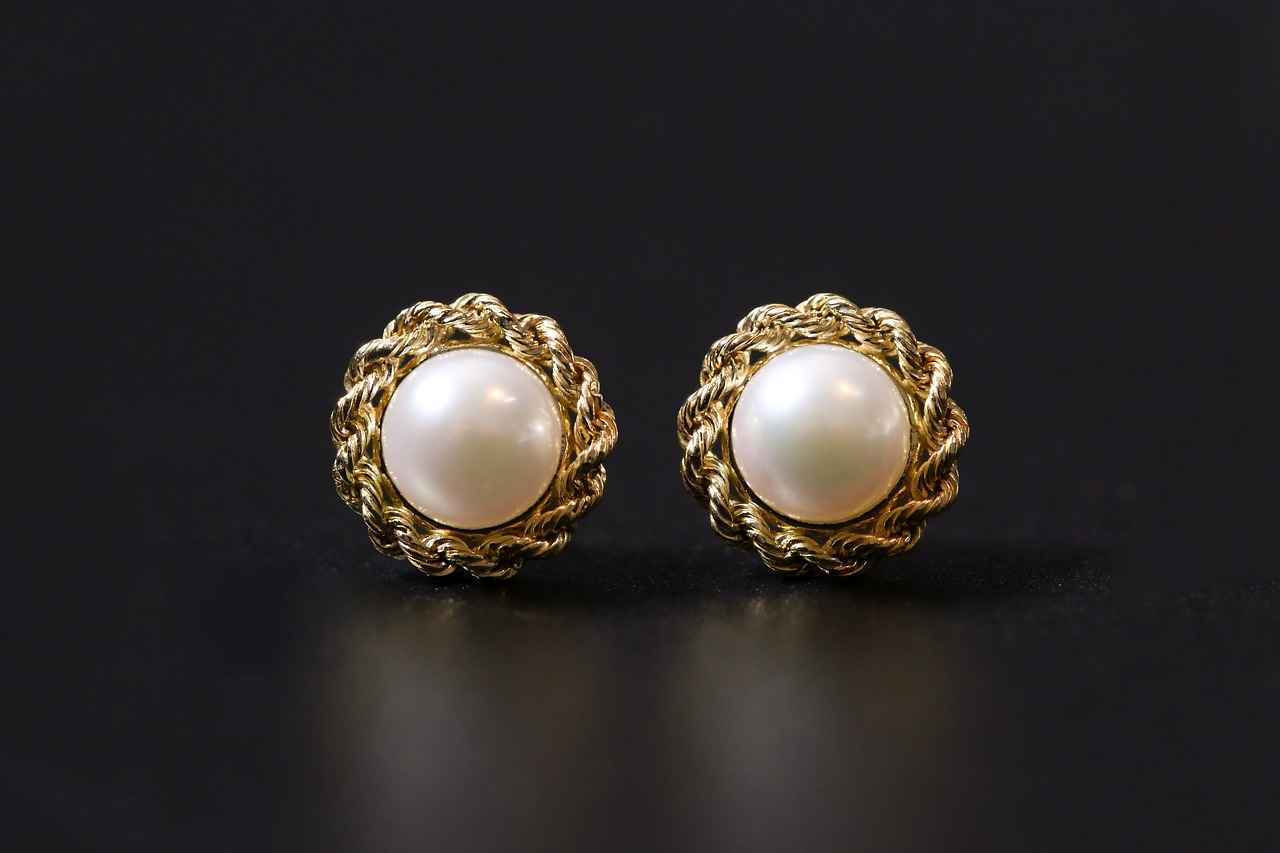
How to Identify Quality in Antique Jewelry?
When it comes to investing in antique jewelry, understanding how to identify quality is crucial. The allure of these pieces often lies in their craftsmanship, historical significance, and the materials used. Below are some practical tips that will help collectors ensure they are purchasing authentic and valuable items.
- Examine the Craftsmanship: High-quality antique jewelry showcases exceptional craftsmanship. Look for intricate details, such as hand engravings, precise settings, and the overall finish of the piece. A well-made item often indicates a higher value.
- Assess the Materials: Antique jewelry is typically made from precious metals like gold, silver, or platinum. Additionally, consider the gemstones used; natural stones like diamonds, emeralds, and sapphires are more valuable than synthetic alternatives.
- Check for Hallmarks: Hallmarks can provide essential information about the piece, including its origin, metal content, and the maker. Familiarize yourself with common hallmarks to verify authenticity.
- Understand the Design Era: Different periods in jewelry design, such as Victorian, Art Nouveau, and Art Deco, have distinct characteristics. Knowing these can help you identify the era of a piece and its associated value.
- Look for Signs of Wear: While some wear can be expected in antique pieces, excessive damage may reduce their value. Evaluate the condition carefully, and consider whether repairs have been made and how they might affect the piece’s integrity.
- Research Provenance: The history of a piece can significantly impact its value. Provenance refers to the documented history of ownership. Pieces with a well-documented background often fetch higher prices.
- Consult Experts: If you’re uncertain about a piece’s authenticity or value, don’t hesitate to seek advice from a professional appraiser or a reputable antique dealer. Their expertise can save you from costly mistakes.
In summary, identifying quality in antique jewelry requires a keen eye and knowledge of various factors, including craftsmanship, materials, and historical context. By following these tips, collectors can make informed decisions and ensure that their investments are both authentic and valuable.
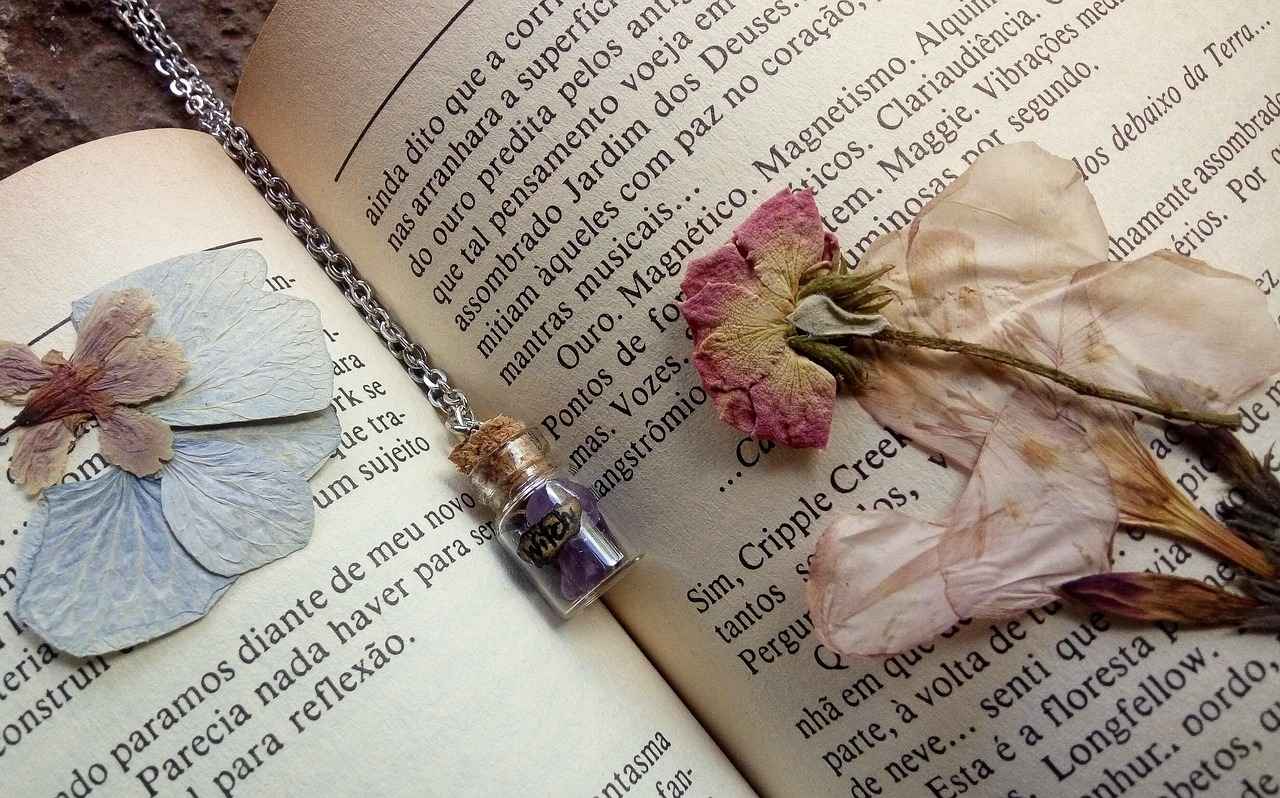
What Should You Look for in Modern Jewelry?
When it comes to purchasing modern jewelry, making informed choices is crucial for ensuring a worthwhile investment. The modern jewelry market is vast and diverse, with numerous options available to buyers. Here are the key factors to consider:
Modern jewelry is often characterized by design innovation. Contemporary designers push the boundaries of creativity, utilizing unique shapes, colors, and styles that reflect current trends. When evaluating a piece, consider:
- Originality: Look for designs that stand out and offer something new.
- Functionality: Some modern pieces blend art with practicality, making them both beautiful and wearable.
- Versatility: Consider how well the piece can be paired with different outfits or occasions.
The prestige of the brand can significantly influence the value and desirability of modern jewelry. Well-known brands often have a reputation for quality craftsmanship and unique designs. When assessing a brand, consider:
- Reputation: Research the brand’s history and customer reviews.
- Designer Background: Investigate the designer’s credentials and previous works.
- Exclusivity: Limited edition pieces often hold greater value due to their rarity.
The quality of materials used in modern jewelry is paramount. High-quality materials not only enhance the beauty of the piece but also ensure its longevity. Key materials to consider include:
- Metals: Look for precious metals such as gold, silver, and platinum, which are durable and retain value.
- Gemstones: Assess the quality, cut, and clarity of any stones used. Natural stones often have higher value than synthetic alternatives.
- Craftsmanship: Examine the finishing and details of the piece; well-crafted jewelry will show attention to detail and skill.
Understanding current trends in the jewelry market can help buyers make informed decisions. Trends can influence both style and value. To stay updated:
- Follow Fashion Shows: Major fashion events often showcase upcoming jewelry trends.
- Read Industry Publications: Subscribe to magazines or blogs focused on jewelry to learn about new designers and collections.
- Engage with Collectors: Joining forums or social media groups can provide insights from other jewelry enthusiasts.
Ultimately, the best modern jewelry is one that resonates with your personal style. Consider what you love and how a piece reflects your individuality. Don’t hesitate to invest in pieces that truly speak to you, as they will become cherished parts of your collection.
In conclusion, when purchasing modern jewelry, it’s essential to evaluate design innovation, brand prestige, and material quality. By considering these factors, buyers can make informed choices that not only enhance their personal style but also serve as valuable investments in the long run.

Are There Risks Involved with Investing in Antique Jewelry?
Investing in antique jewelry can be a rewarding endeavor, but it is essential to recognize that it comes with its own set of risks. Understanding these potential pitfalls can help investors make informed decisions and protect their investments. This section will delve into the risks associated with investing in antique jewelry and provide strategies to mitigate them.
- Forgery: One of the most significant risks is the possibility of purchasing forged items. As the market for antique jewelry grows, so does the prevalence of counterfeit pieces. It is crucial to verify the authenticity of jewelry through reputable appraisers or certification services.
- Fluctuating Market Values: The value of antique jewelry can be unpredictable, influenced by changing consumer tastes and economic conditions. Investors should stay informed about market trends and be prepared for potential value fluctuations.
- Condition and Restoration: The condition of antique jewelry plays a vital role in its value. Pieces that have been poorly restored or altered may lose their historical significance and market value. Always assess the condition before making a purchase.
- Provenance Issues: Lack of documentation regarding an item’s history can lead to uncertainty about its authenticity and value. Collectors should seek out pieces with clear provenance to ensure they are making sound investments.
Mitigating risks is crucial for anyone considering investing in antique jewelry. Here are some strategies to protect your investment:
- Research Thoroughly: Before purchasing, conduct extensive research on the specific type of antique jewelry you are interested in. Understanding market trends, historical significance, and typical pricing can provide valuable insights.
- Consult Experts: Engage with reputable jewelers, appraisers, or auction houses specializing in antique jewelry. Their expertise can help you identify authentic pieces and avoid potential pitfalls.
- Invest in Insurance: Protecting your investment with insurance can provide peace of mind. Ensure that your antique jewelry is adequately insured against theft, loss, or damage.
- Attend Auctions and Shows: Participating in antique jewelry auctions and shows can provide firsthand experience and knowledge. You can observe market trends, engage with other collectors, and learn from experts in the field.
While there are risks involved, investing in antique jewelry can also offer numerous benefits:
- Historical Value: Antique jewelry often carries rich stories and historical significance, making it not just a financial investment but also a cultural one.
- Unique Craftsmanship: Many antique pieces showcase exceptional craftsmanship that is hard to find in modern jewelry, making them valuable for collectors.
- Potential for Appreciation: Despite market fluctuations, well-chosen antique jewelry can appreciate significantly over time, providing a solid return on investment.
In conclusion, while investing in antique jewelry presents certain risks, careful research and informed decision-making can help mitigate these challenges. By understanding the market, consulting experts, and ensuring the authenticity of pieces, collectors can navigate the world of antique jewelry with confidence.
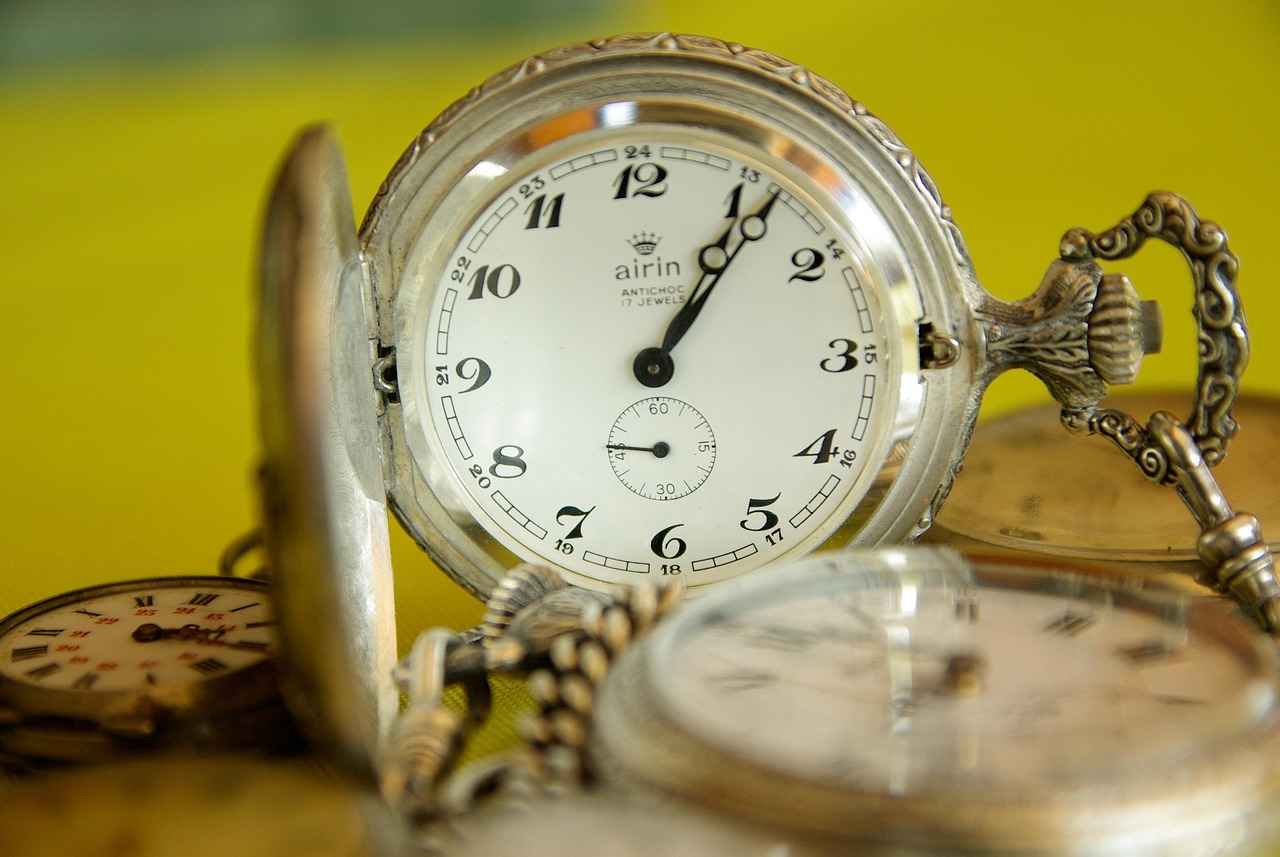
What Are the Trends in Modern Jewelry Collecting?
In the ever-evolving world of fashion and design, modern jewelry collecting has emerged as a vibrant and dynamic field, influenced by a multitude of factors including trends in fashion and advancements in technology. This section delves into the current trends that are shaping the modern jewelry landscape and attracting new collectors.
Fashion is a significant driver of modern jewelry trends. Designers often draw inspiration from runway shows and popular culture, leading to the creation of pieces that resonate with contemporary aesthetics. For example, the rise of sustainable fashion has prompted many jewelers to focus on eco-friendly materials and ethical sourcing, appealing to environmentally conscious consumers.
Technology has revolutionized the way jewelry is designed and produced. The use of 3D printing allows for intricate designs that were once impossible to achieve. Additionally, advancements in CAD (Computer-Aided Design) enable jewelers to visualize and modify their creations with precision before they are made. This fusion of art and technology attracts a new generation of collectors who appreciate innovation.
Today’s collectors are increasingly drawn to personalized jewelry. Customization options, such as engraving or the choice of gemstones, allow individuals to create unique pieces that reflect their personal style. This trend not only enhances the emotional value of the jewelry but also makes it a popular choice for gifts and special occasions.
Social media platforms like Instagram and Pinterest have become powerful tools for jewelry marketing. Influencers and celebrities showcase their favorite pieces, often leading to viral trends that can significantly boost a brand’s visibility. Collectors are now more likely to purchase items that have been featured by their favorite personalities, making social media a critical element in modern jewelry collecting.
- Minimalist Designs: Simple, clean lines are favored by many, emphasizing elegance and versatility.
- Statement Pieces: Bold, eye-catching jewelry that serves as a focal point in an outfit is gaining popularity.
- Mixed Materials: Combining different materials, such as metals with resin or fabric, creates unique textures and visual interest.
The demand for modern jewelry is increasingly influenced by consumer preferences for unique, high-quality pieces. As collectors seek items that stand out, brands are responding by offering limited editions and exclusive collections. This shift not only caters to the desire for individuality but also enhances the perceived value of the jewelry.
Interestingly, many modern collectors are gravitating towards vintage and retro styles, merging the old with the new. This trend reflects a longing for nostalgia and the appreciation of craftsmanship from previous decades. Collectors often seek out pieces that embody the essence of past eras while integrating contemporary design elements.
In summary, the landscape of modern jewelry collecting is shaped by a blend of fashion trends, technological advancements, and evolving consumer preferences. As collectors navigate this vibrant market, they are not only investing in jewelry but also in the stories and innovations that each piece represents.

How to Care for Antique and Modern Jewelry?
Proper care for both antique and modern jewelry is essential to maintain their value and beauty. These treasured items, whether they are heirlooms passed down through generations or contemporary pieces acquired recently, require specific attention to ensure their longevity. This section provides comprehensive guidelines on cleaning, storage, and maintenance to preserve these valuable items.
Cleaning jewelry is crucial for several reasons:
- Prevents Build-up: Dirt, oils, and other residues can accumulate, dulling the appearance of the piece.
- Maintains Value: Regular cleaning can help retain the item’s value by keeping it in pristine condition.
- Enhances Longevity: Proper care can prevent damage that may occur from neglect.
Antique jewelry often requires a gentle touch. Here are some steps to follow:
- Use Mild Soap: Mix a few drops of mild dish soap with warm water.
- Soft Cloth: Use a soft, lint-free cloth to gently wipe the jewelry, avoiding harsh scrubbing.
- Rinse and Dry: Rinse under lukewarm water and dry thoroughly with a soft cloth.
Always avoid using ultrasonic cleaners or harsh chemicals, as they can damage delicate materials.
Modern jewelry can often withstand more rigorous cleaning methods:
- Regular Cleaning: Use the same mild soap solution as for antique jewelry, but you can use a soft toothbrush for intricate designs.
- Jewelry Polishing Cloth: For metals like silver or gold, a polishing cloth can restore shine.
Proper storage is vital in preventing damage:
- Separate Storage: Store each piece separately to avoid scratches and tangling. Use soft pouches or individual compartments in a jewelry box.
- Climate Control: Keep jewelry in a cool, dry place to prevent tarnishing and deterioration.
Regular maintenance is key to preserving the beauty of jewelry:
- Periodic Inspections: Check for loose stones or damaged clasps regularly.
- Professional Cleaning: Consider having antique pieces professionally cleaned and inspected every few years.
For modern jewelry, stay updated on any brand-specific care recommendations, as they may have unique requirements.
- Harsh Chemicals: Avoid cleaning solutions that contain bleach or ammonia.
- Excessive Heat: Do not expose jewelry to extreme temperatures, which can cause damage.
- Wearing During Activities: Remove jewelry during sports, swimming, or cleaning to prevent accidental damage.
By following these guidelines, you can ensure that both your antique and modern jewelry remain beautiful and retain their value for years to come. Investing time in proper care not only enhances the aesthetic appeal of your pieces but also protects your investment.
Frequently Asked Questions
- What is the age requirement for jewelry to be considered antique?
Jewelry is classified as antique if it is over 100 years old. This age criterion helps collectors identify genuine antique pieces and appreciate their historical context.
- How can I determine the value of my antique jewelry?
The value of antique jewelry is influenced by several factors including age, rarity, condition, and provenance. Understanding these elements can help you assess the worth of your pieces more accurately.
- What should I look for when buying modern jewelry?
When purchasing modern jewelry, consider the design innovation, brand reputation, and the quality of materials used. These factors greatly influence the desirability and value of contemporary pieces.
- Are there specific risks associated with investing in antique jewelry?
Yes, investing in antique jewelry can involve risks such as forgery and fluctuating market values. Being aware of these potential pitfalls can help you make more informed investment decisions.
- What trends are currently shaping modern jewelry collecting?
Modern jewelry collecting is heavily influenced by fashion trends and advancements in technology. Keeping an eye on these trends can help collectors stay ahead in the ever-evolving market.
